XME Pay: redefining an m-payments ecosystem
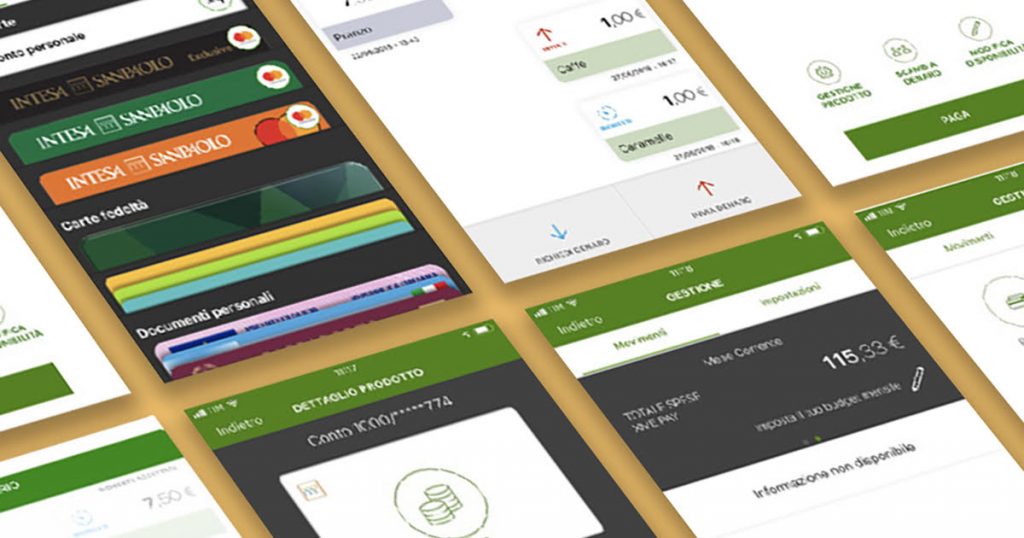
XME Pay: redefining an m-payments ecosystem Intesa Sanpaolo bank Share The human-centered approach is now central to the finance industry, as banks have become savvy in how to best connect to their customers’ needs and desires. As part of this trend, Intesa Sanpaolo asked Experientia to collaborate in the ideation and development of innovative features for a payment app (XME Pay). 3 things to know A step forward for digital and mobile payments The app is designed to be simple and immediately usable by a wide range of users. It also provides new services and functionalities, to improve on existing solutions. Working in agile mode To make development faster, we experimented with hybrid modes of prototyping, UX/UI design and agile methodologies. This helped ensure an efficient process and technically feasible solutions: concepts translate insights into actionable innovation opportunities to be prioritized, prototyped and evaluated. They took the form of platform or service visualizations, product design sketches, feature ideas, interaction and user interface solutions. Ongoing checks with service users To speed up the process of prototype testing and design iterations, we carried out several test rounds (with young users, seniors, professionals and families). Gallery In depth Service mix: Prototyping Information architecture User experience testing Behavioral modeling Useful links: Link to XME Pay Service by ISP Context Mobile and contactless payments continue to grow at an astonishing rate in Italy. In this context, Intesa Sanpaolo needed to quickly develop an effective mobile solution, able to compete both with the solutions provided by the main market players (Apple, Google) and with new innovative local players (SatisPay). Challenge Experientia was asked for a support during the contextual research, the definition of service concepts and prototypes, and the usability tests. Research Experientia conducted 16 contextual interviews in Milan and Naples, 10 with end-users and 6 with merchants. The interviews allowed us to identify payment behaviors and routines, and to generate ideas for accessory services such as discount management and loyalty cards. Design The study of the concept features was fundamental in the definition of the first and subsequent prototypes. Working in Agile, it was possible to quickly carry out several iterations of the application, and to test the functions with users in special sessions: some were dedicated to usability testing (training evaluation), others to specific insights, with different solutions in comparison (A/B testing). Impact The final solution was then developed and released in the summer of 2018, and was adopted in the first six months by 1.2 million customers (18% of the bank’s multi-channel customers). Link to XME Pay Service by ISP Related projects All Services Behavioral design Research and assessment Strategy Finance Banca 5, a new branchless bank model Consumer technologyFinance BancoSmart, an award-winning ATM Finance CSA: sentiment-based decision support platform for crypto-currency trading Go back to our portfolio
XME Salute: integrating insurance offerings with wellness and health practices
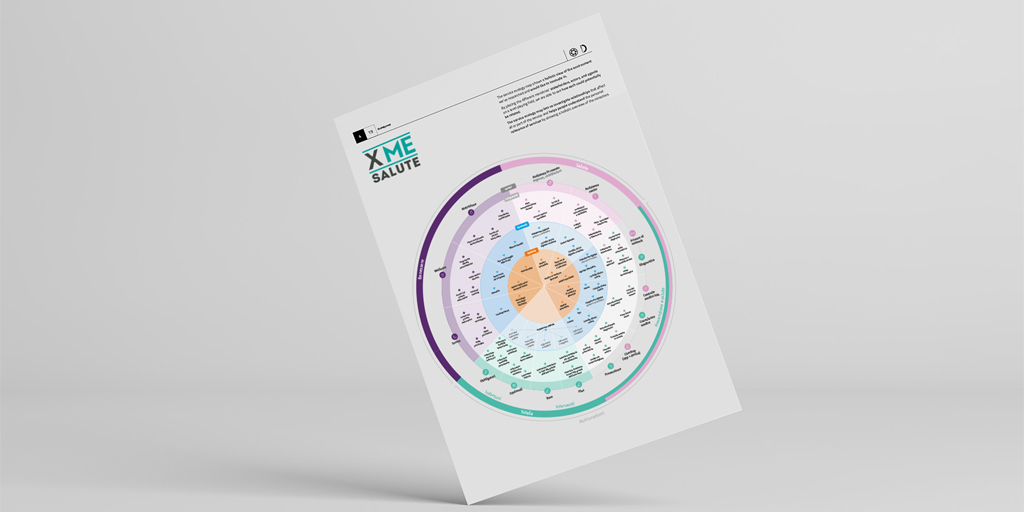
XME Salute: integrating insurance offerings with wellness and health practices Intesa Sanpaolo bank Share Analysis of the areas of overlap between welfare practices and insurance offering, up to the realization of a banking product able to enhance them both. 3 things to know Redefine the meaning of “insurance product” Research results allowed us to identify behavioral patterns regarding the attribution of value and meaning in health and wellbeing areas, and define hypothetical use scenarios on how to involve users in a holistic self-care. Facilitating and enabling behavioral change Based on an analysis of the offer and on the formative evaluation, we were able to create a better definition of the service model and a detailing of pre-requirements to convey this service through digital/web and mobile platforms. Drivers of behavioral change We analyzed drivers of behavioral change such as Environmental & Life Constraints, Motivation and Belief, Social Pressure and Constraints, Cultural Frameworks, and Architectural and Interface Affordances. Gallery In depth Service mix: Prototyping Information architecture User experience testing Behavioral modeling Useful links: Link to XME Salute Service by ISP Context Since the middle of the last decade, the phenomenon of private healthcare insurance in Italy has increased regularly: in 2016, 10 million Italians declared that they had private healthcare insurance, and the reason for the choice is due to a fundamental reason that prevails over everything else: the length of waiting lists (72.6%). To deal with a context in which users give up medical treatment because it is too expensive, Intesa Sanpaolo has launched an innovative service, able to integrate wellness practices (e.g. improving nutrition, sleep, …) with easy access to a network of clinics in which to book online medical examinations, diagnostic tests, dental and physiotherapy services. Challenge The Intesa Sanpaolo Innovation Center turned to Experientia for ongoing support in defining value propositions for its new set of services, called XME Salute (“Health 4 me”). We investigated behaviours, values and convictions people have on themes such as wellness, health and their relation with insurance products. Research Research results allowed us to identify some behavioral patterns regarding the attribution of value and meaning among health and wellbeing areas, enabling us to create hypothetical use scenarios to understand how to involve users in a holistic self-care. We analyzed drivers of behavioral change such as Environmental & life constraints, Motivation and belief, Social pressure and constraints, Cultural framework, Architectural and interface affordances. Design Based on the offer and the formative evaluation, we were able to better define the service model and detail some pre-requirements in order to convey this service through digital/web and mobile platforms. Impact Health services are an important testbed for the cultural change required by digital, so it is essential that the service model provided remains consistent with the initial design: for this reason, since the launch of the service (June 2019) we have continued to follow the evolution of features in order to keep them consistent with the service model. Link to XME Salute Service by ISP Related projects All Services Behavioral design Research and assessment Strategy Consumer technology Buttonless: engaging users in interactions with keyless devices B2B Collaboration UI, redesigning the filter navigation experience Cities & InfrastructureSocial innovation ToNite: social innovation and urban regeneration in Turin, Italy Go back to our portfolio
CityOpt: Engaging citizens to facilitate energy demand responses
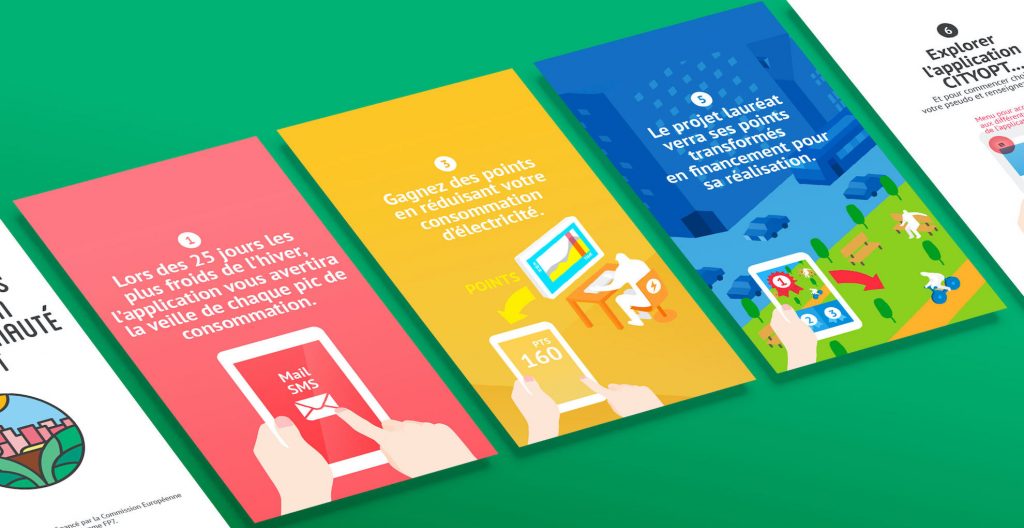
CityOpt: Engaging citizens to facilitate energy demand responses European Commission FP7 Share CityOpt, a research project funded under the FP7 European Commission framework, is getting citizens involved in testing new tools to reduce energy consumption during peak loads, with the goal that this pilot program will set a new trend in protecting locations with fragile electricity supplies. 3 things to know Encouraging behavioral change The CityOpt app helps people reduce domestic energy consumption during energy peak loads and nudges them towards more eco-friendly behaviors. Incentivizing energy reduction Their savings were rewarded with points, which participants could “donate” to a local community project of their choice, helping to maintain people’s engagement with the app. Real time monitoring An office block in Vienna, Austria, uses the CITYOPT app to identify the best scenario to integrate energy supply sources with fluctuating temperatures into an efficient micro-energy network.. Gallery In depth Service mix: Policy development Envisioning Business strategy design Prototyping Information architecture Participatory design Service design User experience testing Context One of France’s most fragile regions, the Provence-Alpes-Côte d’Azur, is perhaps best known for its vineyards, lavender groves and sparkling coastal cities like Nice. It is however also one of France’s most fragile regions for electricity supply. Particularly in winter, when electrical heating sees electricity use rise, the locals experience frequent blackouts, as the local energy provider, EDF, tries to manage the supply. This is why Nice Côte d’Azur has been selected as a pilot city for the CITYOPT project, an initiative that aims to create new methods and tools to deal with energy consumption, and to involve local citizens in designing and testing them. CITYOPT is a pilot programme funded by the European Commission that explores and tests new tools for reducing energy consumption during peak loads. Research Experientia has led the user research activities for the pilot program. User experience methodologies have engaged local citizens from the area in interviews, workshops and design activities. These have defined what people really need to help them control their energy use, and to create a mobile app that the pilot participants will be able to use to do just that. The entire project has applied a user experience (UX) methodology, to make sure that the tools and methods that the project proposes for energy management resonate with the people who will have to use them. It’s not just Nice Côte d’Azur: other pilots are planned for Helsinki, Finland and Vienna, Austria, where similar UX methods are also being applied. Right now, the Nice pilot looks at the residential level, and explores how people’s everyday behaviors can be nudged to better support the energy use of the entire region. Model Changing individual behaviors to help the entire region The Nice Côte d’Azur local population plays a crucial role in reducing domestic electricity consumption during peak loads. To help people change the way they consume electricity, the pilot provides selected locals with the CITYOPT mobile app (aka the CITYOPT Operational tool). The app informs people about upcoming network peak loads, and then uses playful persuasion to get them to commit to lowering their energy consumption at a specific time. How the app was created – a participatory process The Experientia design team also focused on the visual design of the mobile application. In workshops for design idea creation, designers and local stakeholders came together to brainstorm innovative ideas that could potentially be included in the app. A second participatory workshop, again involving local stakeholders, compared these ideas to the expectations and needs of local people, which had been uncovered in the original interviews and workshops with people from the region. The feasibility of the different ideas was discussed, and the final features for the CITYOPT app were selected. Designing, sketching and coding is a long road from ideas to app. First Experientia’s design team, with the support of the local project partners, worked on three wireframes of the app, which defined the information architecture and interaction model for how the app would work. Later on, colors and styles were added, taking it from outline to a fully-fledged design. Experientia then developed the front-end, web-based code, while the consortium partners – CSTB and EDF – implemented the back-end, repositories, hardware interfaces and statistical algorithms. Nice Côte d’Azur Métropole was responsible for localizing the application in French and recruiting local dwellers to participate in the pilot test. Impact The project was piloted with 200 households in Nice using the CITYOPT app during the first wave of testing. During the demonstration test, leader Experientia explored how people use the app, whether they take part in the demand-response scenarios, and what conditions and driving factors are most likely to convince people to participate. The test research was supported by quantitative and qualitative activities like online surveys, contextual interviews and contextual observations. The actual consumption data was also measured through pre-installed smart-meters, and used to evaluate the effectiveness of the CITYOPT system. The CITYOPT project has provided us with real data on effective ways to convince people to reduce their energy use at a level that can help improve the consumption of an entire region. It’s now a matter of scaling up the project to the entire region, and beyond, and providing a body of information that can be used by any region looking for effective ways to reduce energy use. Meanwhile, the other CITYOPT pilot programmes will demonstrate that Nice is not a solitary example, and that user experience methodology can offer real impact on people’s behaviors, and on behavioral change for more sustainable lifestyles. Related projects All Services Behavioral design Research and assessment Strategy Cities & InfrastructureSocial innovation ToNite: social innovation and urban regeneration in Turin, Italy Cities & InfrastructureSocial innovation Low2No: shaping the future of sustainable living Go back to our portfolio
BancoSmart, an award-winning ATM
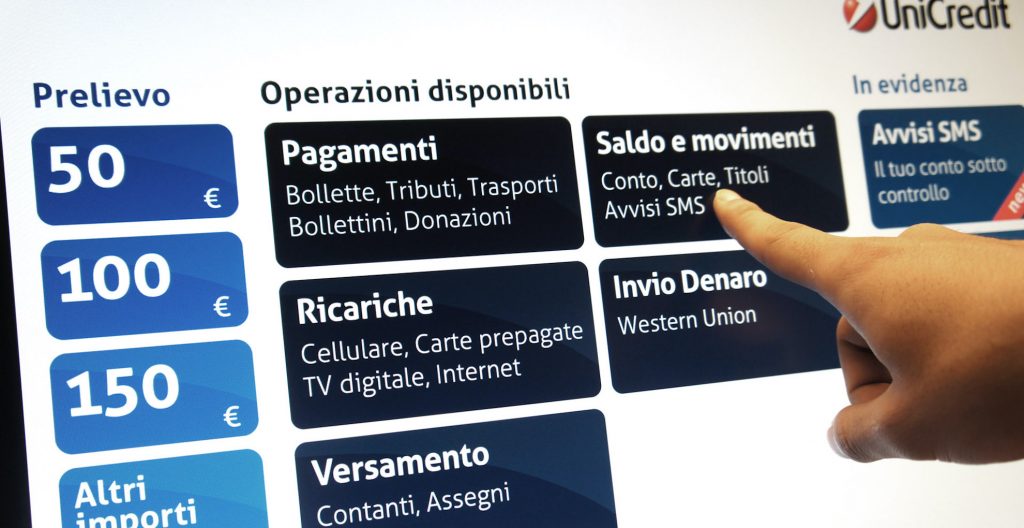
BancoSmart, an award-winning ATM UniCredit Share The human-centered approach is now central to the finance industry, as banks have become savvy in how to best connect to their customers’ needs and desires. As part of this trend, global banking and financial services company UniCredit Bank asked Experientia to create a user-friendly, people-centered ATM – the BancoSmart. 3 things to know Easier and faster The BancoSmart offers more services by using an advanced algorithm that offers users a personalized home page, geo-referenced billing options and tailored services. Improved usability Its UI makes it easier and more intuitive to use, including for people with poor vision; all levels of literacy and non Italian speakers. It is 33% faster in use, has attracted more than 25% of new (non UniCredit) customers, and reduced error rates (non-conclusive interactions) to less than 1%. First mover in Italy First Italian ATM using a touchscreen interface, allowing intelligent and optimized menu interactions. It has been rolled out all across the country. Gallery Video https://player.vimeo.com/video/110351007 In depth Service mix: Design thinking Information architecture Service design Useful links: ADI index showcase Blog post Context ATMs are highly regulated in Italy: to make banking accessible they have to provide a wide range of services, including the payment of various utilities. Many ATM interfaces are not user-friendly and force people to wade through a succession of many screens. They use a language and an organization that reflects the bank, rather than the lived financial experience of the customer. Challenge UniCredit came to Experientia to refresh and redesign the interface. It had to run on various ATM hardwares including legacy terminals of different providers with various screen sizes and tech specifications. We convinced the bank that it could be reinvented, even within the constraints of regulation, hardware and underlying software. Research Experientia carried out in-depth user experience research with ATM users across Italy, spot interviews of current ATM users, stakeholder interviews, card sorting sessions and heuristic evaluation of existing UniCredit and competitor interfaces. This provided foundation for the information architecture and service design of the ATM.We also conducted card sorting activities to create a new navigation structure that fits people’s expectations of where to find features and functions. Design Experientia designed a responsive full touchscreen design solution that works on the various ATM’s. We ran multiple cycles of design, prototyping and usability & user acceptance testing to ensure that the final interface is strongly based on people’s financial behaviors and exceeds their expectations and needs for ATM use. The new menu structure offers much clearer guidance on what functions are found in each menu area, and always offers people the chance to go back to the home page. It has now been rolled out to all UniCredit’s Italian ATM branches. Impact Experientia has reinvented the ATM interface for UniCredit – making it easier to use, faster, and with more services. One of the key innovations is its level of personalization – the ATM has a personalized homepage, with service offers tailored to people’s banking profiles, and a speedy withdrawal function that offers the three most commonly used withdrawal amounts, personalized to each individual user based on their past behavior. Placing these three amounts on the homepage cut the withdrawal time by 30%. Public reactions to the BancoSmart interface have been extremely positive, with clients commenting on the increased speed, legibility, appealing graphics, and the improvement in features and functions. The highly intuitive ATM interaction allows clients to easily navigate, locate and use functions, from simple features like cash withdrawals to more complicated functions like deposits, information retrieval, bill payments and mobile phone top-ups. The interface is visually attractive and easy to read, with large fonts and clear banking function categories. Bancosmart was selected for the ADI Design Index, the annual publication showcasing select Italian Design products considered for the Compasso d’Oro International Award. View our ADI Design Index showcase here. ADI index showcase Blog post Related projects All Services Behavioral design Research and assessment Strategy Finance Banca 5, a new branchless bank model Finance CSA: sentiment-based decision support platform for crypto-currency trading FinanceHealth XME Salute: integrating insurance offerings with wellness and health practices Go back to our portfolio
GoCare: Interactive dashboard for a better home hospitalization service
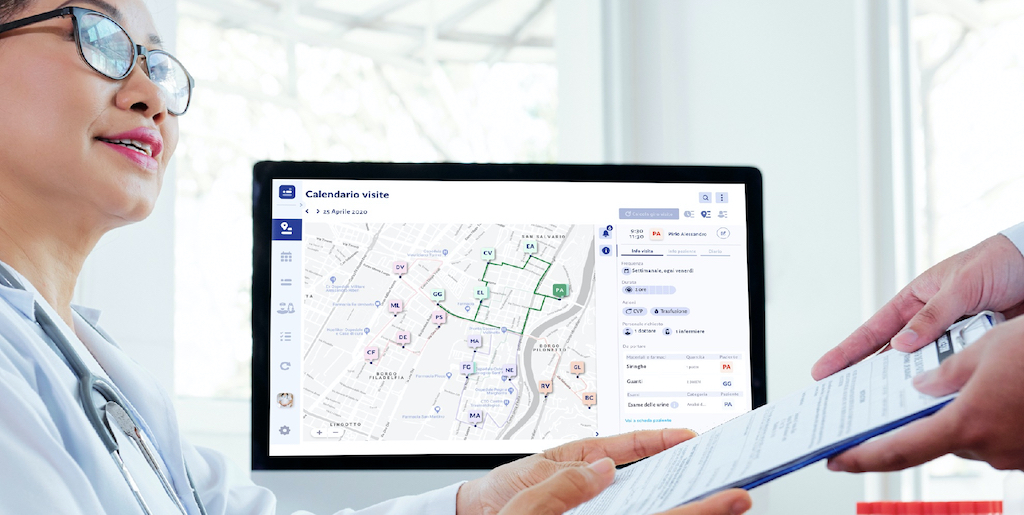
GoCare: Interactive dashboard for a better home hospitalization service CANP European Research Project Share In the context of the European research project CaNP* (“Casa Nel Parco”), Experientia conducted qualitative interviews, shadowing activities and participatory workshops to identify weaknesses and opportunities to improve the home hospitalization service of Molinette di Torino. Based on this research, the GoCare interactive dashboard was designed and validated. (* application 320-12 with co-financing of POR FESR Piemonte 2014-2020) 3 things to know Easier and faster visit management GoCare helps healthcare professionals to significantly reduce time spent on planning the schedule of visits, by analyzing and cross-referencing the relevant data – including patient priority and complexity, geolocation, and the healthcare staff’s shift. Improved communication between stakeholders Communication between caregivers and medical staff is facilitated through simultaneous access to a shared information center with visit schedules and patient monitoring. Data driven decision making The platform provides digital assistance and data to make daily decisions, just a click away. Gallery In depth Service mix: Prototyping Information architecture Participatory design Service design User experience testing Ethnography Context In the context of the European research project CaNP (“Casa Nel Parco”), Experientia conducted qualitative interviews, shadowing activities and participatory workshops to identify weaknesses and opportunities to improve the home hospitalization service of Molinette di Torino. Based on this research, the GoCare interactive dashboard was designed and validated. The prototype facilitates the planning of healthcare staff visits to patients’ homes, improves communication between staff, patients, and healthcare professionals, and manages contingencies, and better use of resources. The GoCare prototype of the CANP European research project (Question 320-12) was created thanks to the co-financing of the POR FESR Piemonte 2014-2020. It was implemented in the context of the Piedmont FESR 2014/2020 Regional Operational Program, in particular the “Health and Wellness” Technological Platform. functional technologies for the implementation of s3 strategies (Call Code: I.1b.2.2) Challenge Home hospitalization services offer an alternative to traditional hospitalization for patients in the acute phase of the disease. Active in Piedmont, since 1985 at AO CSST, it is dedicated to patients with geriatric and metabolic bone diseases. Experientia has designed a digital platform with the aim of facilitating the planning of visits by healthcare professionals to patients’ homes, improving communication between staff, patients and healthcare professionals, optimizing the management of contingencies and the use of resources. Research Experientia conducted interviews and analysis of the tasks within the OAD of Molinette and Cresla of Novara. The interviews provided useful details and requirements. Case studies on the best practices of similar services on a global scale, digital platforms, information structure and visual design were also researched. Critical points and opportunities emerged from the analysis. Design The conception phase subsequently allowed to develop a concept of a digital platform. This concept was designed, starting from the analysis and evaluation of activity flows, user paths and the creation of a detailed service model. Starting from the hi-fi wireframe screen design of the digital platform, the Experientia team created a design system and a visual reference (visual UI) and developed a click-through prototype, iterating based on the initial feedback received from the experts. Impact A study conducted by the University of Turin estimated that, if the platform were implemented in the current OAD department of the Molinette hospital, healthcare personnel would save up to 90-120 minutes a day used today to plan daily visits and 180 minutes per day today used to update paper documents. Related projects All Services Behavioral design Research and assessment Strategy Health Rare disease patient journey mapping HealthSocial innovation Singapore: a city for people aging gracefully FinanceHealth XME Salute: integrating insurance offerings with wellness and health practices Go back to our portfolio
Buttonless: engaging users in interactions with keyless devices
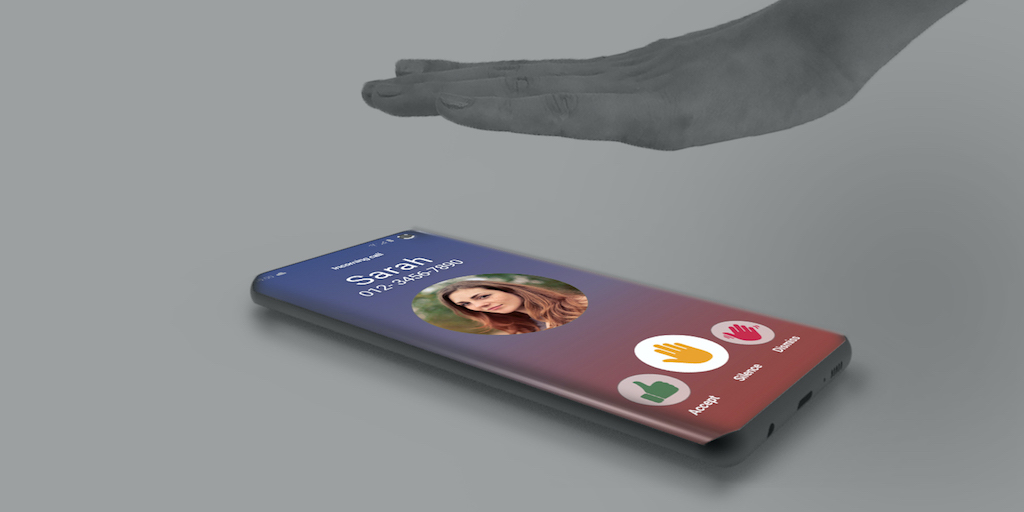
Buttonless: engaging users in interactions with keyless devices Samsung Share As we inch closer to phones with all-screen designs, physical buttons are on the chopping block. But how do you interact with a smartphone that has no buttons? Samsung asked Experientia to develop two navigation frameworks for a concept device. 3 things to know A new language Through extensive research, benchmarking, and the organization of a workshop with industry experts (incl. cognitive psychologists and UX specialists), a new language of interacting with a buttonless device was constructed, focusing not merely on isolated substitutes. From the workshop, two design challenges were identified and subsequently developed. The path to keyless strategy The strategy is based on analyzing the dynamic relationship between the user and the device, understanding that the device’s position significantly influences interaction (Edward T. Hall, ‘Proxemic’, 1968). By tracking user location and device handling, the device and its AI can anticipate user expectations and respond intelligently to various usage conditions. UX, UI and usability test The development of a functional physical prototype for a specific interaction was instrumental in augmenting the persuasiveness and efficacy of our design proposition. Moreover, Experientia conducted a usability test involving seven participants whose demographic characteristics aligned with potential international users of forthcoming Samsung flagship devices. This assessment centered on evaluating key aspects of the developed UX framework, thereby providing valuable insights into its usability and effectiveness. Gallery Benchmark Competitor Assessment Concept development Test User Test In depth Service mix: Envisioning Prototyping Information architecture User experience testing Useful links: Wired article External link Context Samsung, one of the world’s renowned communication companies, turned to Experientia to craft a tailored UX framework for the development of buttonless mobile solutions, encompassing both lateral and non-lateral interfaces. Challenge The task for Experientia was to cultivate a distinct language of interaction between users and their devices, fostering a seamless and intuitive user experience. Research The research process aimed to create user-centric UX navigation frameworks for buttonless devices. It started with market benchmarking and heuristic evaluations of alternative interaction methods, then an expert workshop identified key issues. Framework ideation led to tailored proposals, prototyped for validation. Design User testing gathered valuable insights, including changes in device handling under different conditions, universal gesture commands, and strategies for preventing user errors. This thorough research process informed the creation of user-centric UX navigation frameworks, ensuring a seamless and effective user experience. Impact The results of the project, center on establishing a symbiotic language between the device and the user. This language encompasses specific gestures and interaction cues designed to facilitate a seamless and harmonious collaboration between the user and the device, ultimately enhancing the overall user experience. Wired article External link Related projects All Services Behavioral design Research and assessment Strategy Brand UXConsumer technology European car aesthetics: Unveiling preferences and values Brand UXConsumer technology Mobile Privacy UX Consumer technology Customer experience insights to innovation Go back to our portfolio

